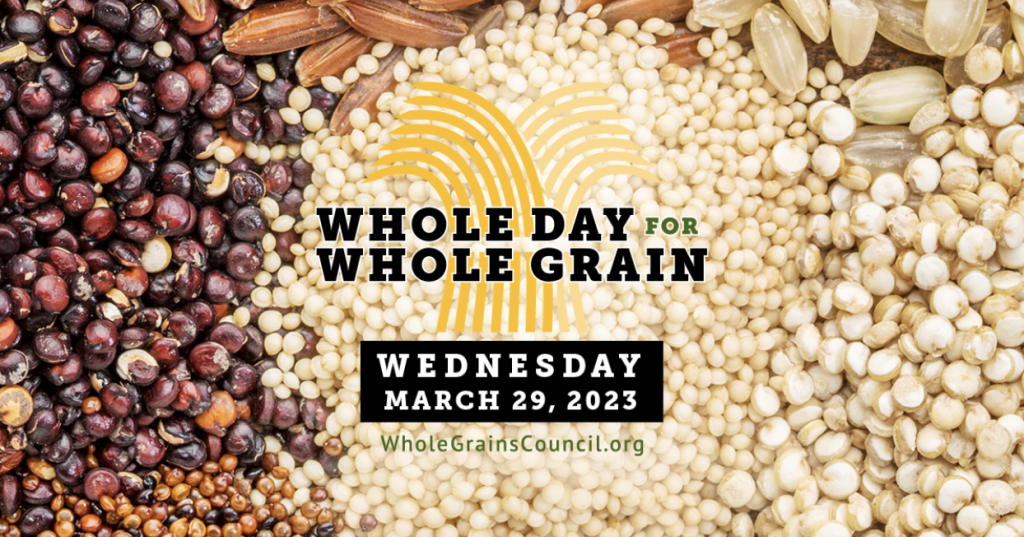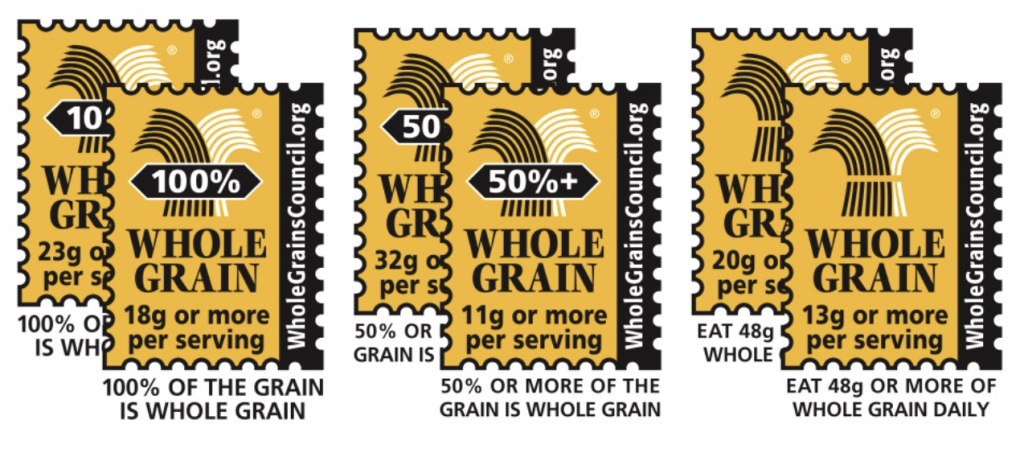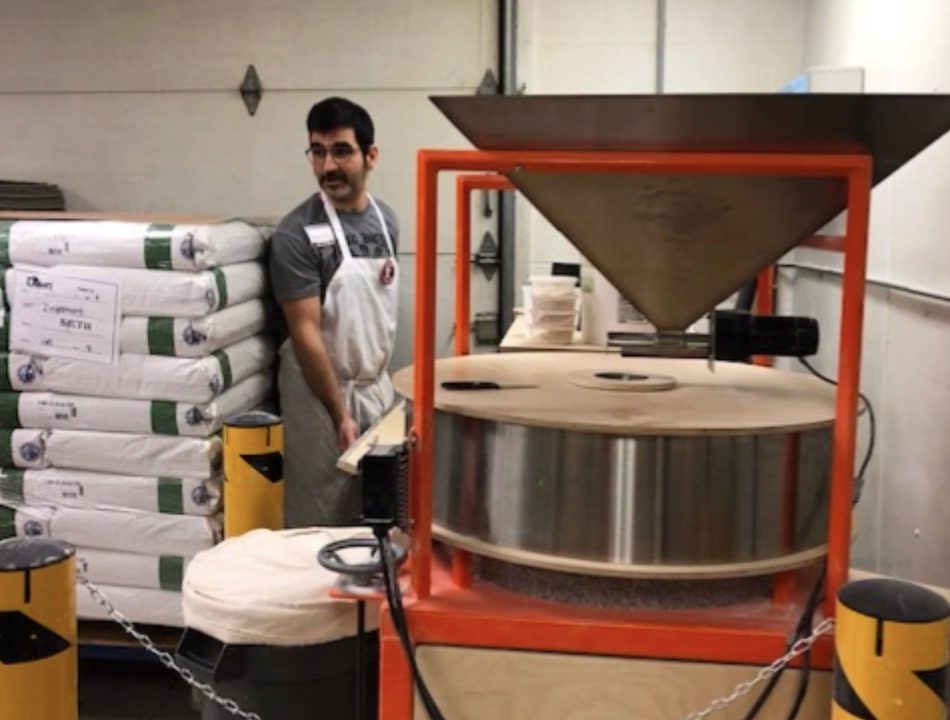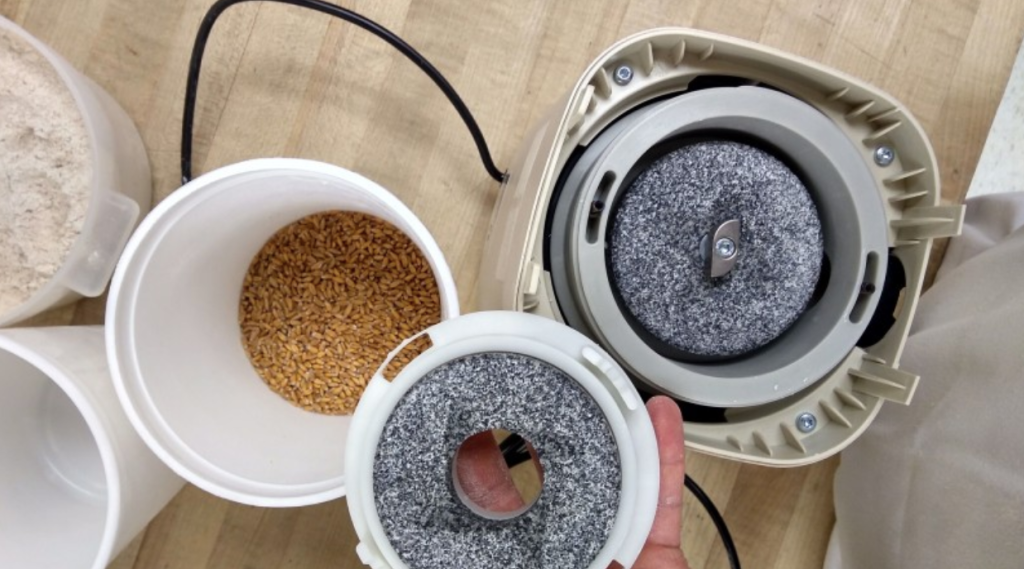
Each year in March, to close out National Nutrition Month, the Oldways Whole Grains Council, for over a decade now, has been spearheading a national celebration of the amazing flavors and health benefits of whole grains. Newly christened, “A Whole Day for Whole Grain,” the annual celebration comes to the Bakehouse next week on Wednesday, March 29th; and, having recently become a Council member, we’re excited to join the party!
The Oldways Whole Grain Council –
What does this organization do?
Founded in 2003 and based in the US, the Oldways Whole Grain Council is a nonprofit advocacy group of millers, manufacturers, scientists, chefs, and bakers whose aim is to increase the awareness and consumption of whole grains for better health and optimum flavor. At the heart of its mission are initiatives that the Council pursues rigorously, which include:
- To clarify the definition of “whole grain,” document the health benefits of whole grains, and advocate additional whole-grain health research.
- To educate consumers about the benefits of whole grains
- To help Americans find whole grains, with a packaging symbol, and educate them on cooking whole grains
- To promote whole grains through a positive message about their benefits, rather than by criticizing refined grains.
- To serve as a conduit between science, industry and consumers.
- To help grain-product companies, retailers and restaurants meet the needs of health-conscious consumers with appealing whole grain products.
The Council’s Accomplishments to Date
Since it first convened in 2003, the Whole Grains Council has:
- Grown from 9 members to almost 400, including many industry leaders (and the Bakehouse!). View Member Directory.
- Created an extensive website with information for consumers and the press.
- Achieved scientific consensus on a widely-accepted definition of whole grains.
- Managed a continuing campaign to educate the media and the public about the health benefits and delicious tastes of whole grains.
- Launched the Whole Grain Stamp, creating a familiar packaging symbol that helps consumers select and buy whole grain products. As of August 2022, over 14,000 products used the Whole Grain Stamp in 65 different countries and seven languages.

“The Whole Day for Whole Grain” Celebration
at the Bakehouse

Here at the Bakehouse, as a newly minted member of the Oldways Whole Grain Council, we applaud all the Council’s efforts and are excited to join the “Whole Day for Whole Grain” celebration with some whole grain education and sampling of our own! Since acquiring our first stone mill in 2018 (we now have 2!) we’ve been pursuing a progressive vision of freshly milled organic whole grains to infuse our artisan breads and pastries with great flavor and the fullest nutrition. It’s also been our mission to support local and regional organic growers and farmers and make meaningful investments in the infrastructure needed to make our regional economy thrive, which also means working with local millers who share the same vision, such as our friends at Janie’s Mill in southern Illinois.
Why We’re Hooked on Freshly Milled Milled Whole Grains
At the Bakehouse, tradition, history, time-honored techniques, and the quest for full flavor are at the heart of what we do. We’ve always looked backward, to move forward in our baking. Our latest “old-o-vation,” to borrow an apt term of Zingerman’s co-founder, Ari Weinweig, has been milling and baking with our own fresh whole-grain flour from a host of locally-sourced and sustainably-grown grains.
Why Use freshly milled whole grains?
We like lists here at the Bakehouse. They help us remember so we’ve come up with our own 7 Reasons to Fall for Freshly Milled Whole Grains. Here we go!
1. Flavor and Texture are ALWAYS first
We’re focused on freshly milled flour for many reasons, but boosting flavor and texture are at the top of the list. We want to make food that tastes great! Freshly milled flour results in hands-down more flavorful breads and pastries, with more intense aromas (which is important, as smell plays a dominant role in our perception of flavors). Since the oils of the grain’s germ (more on this later) are included in the fresh flour, the resulting breads and pastries are often relatively more tender. (Think about how the addition of a fat, like oil or butter, can make for more tender baked goods.) The bran of grains holds onto liquids, helping our breads and pastries stay moist; rarely a bad quality in baking.
2. We like to have fun and learning is fun
Milling our own whole grain flours is giving us the opportunity to play with our food, so to speak, in a very fundamental way that we haven’t explored before. When work is playful we find it to be more successful and rewarding. We’re learning an enormous amount about cereal whole grains, local agriculture, our food system, milling, and history–from ancient Mesopotamia to the world of milling in 19th century America. All of this learning is leading to better baking.
3. Freshness Is Vital
This one is pretty self-explanatory…but we’re going to talk about it anyway! An easy comparison is coffee: Would you rather have a cup of coffee made from freshly ground beans or one from beans ground months ago? Fresh, right? We believe the same goes for flour—fresh is better. And freshness doesn’t just apply to the flour; when properly made, breads and pastries made with freshly milled flours will stay fresh longer thanks to the natural oils present in the flour.

Amy, the Bakehouse’s Managing Partner, actually has a vision: “In the future, I see flour mills on the kitchen counters of avid home bakers. Freshly milled whole grains will be used widely and will be embraced for their flavor and nutrition. Move over Mr. Toaster and make room for your friend Ms. Mill.”
4. Freshly Milled Flour Is Chock-full of Nutrients
First, a brief grain anatomy overview. When we receive grains ready for milling, there are 3 basic parts to know about on each berry: the bran, the germ, and the endosperm. The bran is high in fiber, has a good amount of proteins, and phytonutrients that are nutritious. The germ is the smallest part of the kernel, but it contains the highest density of nutrients—mostly fatty acids and a lot of vitamin E. The endosperm is the largest part of the kernel; it’s primarily starch and serves as the food for the plant—this is the only part you get with commercial white flour.
Stone-ground mills, crush the whole grain kernel—the bran, the germ, and the endosperm—releasing all of the nutritious vitamins, minerals, and oils into the resulting flour. This flour is more complete and as nature designed it—a whole food. We can use that flour as is (whole grain flour), or we can sift out some of the bran (high-extraction or ‘bolted’ flour) to varying degrees, which is somewhere between a whole grain flour and a white flour. The beauty of freshly stone-milled flour is that even if some of the bran is sifted out for a high-extraction flour, the oils of the germ have still been rubbed into the white, starchy portion of the flour, resulting in a relatively more flavorful and nutritious “whitish” flour, that still performs well and tastes delicious.
5. Less Is Often More
We’re focusing on food waste reduction in our bakery in novel and unexpected ways and using whole grains is a step in the right direction. Not removing and wasting (the most flavorful and nutritious) part of the grains we use is a nice added bonus for doing something we already believe has a lot of value! You might say it’s like not peeling the grains.
6. Tied To Traditional Methods
We believe in preserving traditional baking methods and recipes. Stone milling is bringing back an old tradition to our baking. Before the middle ages in western countries and still today in some parts of the world, people mill(ed) all of their grain at home, by hand with simple grinding stones. Then milling became centralized and stone mills became an important part of communities. Families and farmers would bring in their grain to the local mill to have it milled.
We are excited to support this tradition by creating products made with freshly-milled flour. The icing on this cake of endeavor is that we’ve joined a rich local history dating back to the early 19th century; a time when water-powered stone grist mills, grinding whole grain flours from abundant crops of locally-grown wheat, rye, and corn, were central to every town and agricultural community that settled along the main rivers and their tributaries here in our own county.
We are excited to support the re-creation of a stone milling tradition in the United States by using our New American stone mills, custom-designed and handcrafted by Andrew Heyn in Elmore, Vermont. Andrew’s mills are now dotting the American landscape, helping artisan bakers revive whole grain baking.
7. Connecting To Community
Food can bring people together to create stronger communities. Sourcing local whole grains to mill and bake is broadening our community. We have been introduced to many other seekers of great food and keepers of tradition. Together we are improving the local food system around us and spreading joy and nutrition. Can’t beat that!
Join us in this whole grain baking adventure! Partake in the fun and don’t forget to stop by the the Bakeshop next week on “Whole Day for Whole Grains” to sample our whole-grain breads and pastries and pick up some of our own freshly milled whole grain flours to try your hand at whole-grain baking at home!
After a long, established career as a Ph.D. art history scholar and art museum curator, Lee, a Michigan native, came to the Bakehouse in 2017 eager to pursue her passion for artisanal baking and to apply her love of history, research, writing, and editing in a new exciting arena. Her first turn at the Bakehouse was as a day pastry baker. She then moved on to retail sales in the Bakeshop, followed by joining the Marketing Team and becoming the Bakehouse’s designated culinary historian. In addition to her retail sales and marketing work, she’s a member of the Bakehouse’s Grain Commission, co-author and editor of the Bakehouse's series of cookbooklets, and a regular contributor to the BAKE! Blog and Zingerman’s Newsletter, where she explores the culinary, cultural, and social history and evolution of the Bakehouse’s artisan baked goods.


